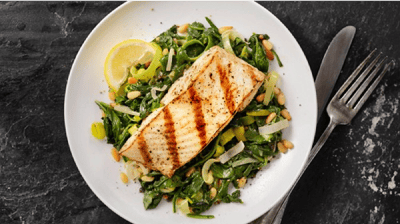 The flexitarian diet helps you eat healthier without dictating strict guidelines or counting every calorie that crosses your lips. According to U.S. News, the flexitarian diet is one of the best healthy eating plans due to its adaptability and straightforward rules, while dieticians praise it for its lifestyle-based approach. Here’s what you need to know about flexitarianism:
The flexitarian diet helps you eat healthier without dictating strict guidelines or counting every calorie that crosses your lips. According to U.S. News, the flexitarian diet is one of the best healthy eating plans due to its adaptability and straightforward rules, while dieticians praise it for its lifestyle-based approach. Here’s what you need to know about flexitarianism:
What it means to be a flexitarian
The name “flexitarian” is a portmanteau of “flexible” and “vegetarian,” which essentially sums up the diet’s approach to food. Rather than simply focusing on abstaining from meat and other animal products, flexitarians prioritize eating whole plant-based foods. These include vegetables, fruits, leafy greens, and whole grains, along with protein-rich nuts and legumes.
Healthy options like these comprise the majority of a flexitarian’s diet, but there’s also room for occasional animal products. That way, you don’t have to completely give up favorites like burgers, chicken, and fish. That said, flexitarians aren’t lenient when it comes to junk food. Healthline advises cutting back on processed foods, sugary treats, and keeping an eye on items that could sneak excess sugar into your diet, such as beverages, sauces, and salad dressings.
“I think people are attracted to this diet because you can be a little bit more flexible on it,” explains registered dietitian Kate Patton. She further states the flexitarian diet’s overarching goal of emphasizing plant-based foods helps adherents keep the weight off.
How much meat can you have?
As the name suggests, flexitarians can choose how much meat to consume. Typically, dieters try to have between 9 and 28 ounces of meat every week, while keeping in mind a three-ounce portion of meat is about the size of a deck of cards. Cleveland Clinic suggests starting off by having 28 ounces of meat, spread across five days in a week. From there, you can continue to cut back further, to having animal products three or four days a week, limiting your intake to a total of 18 ounces. If you’re looking to take it a step further, you can limit your consumption to 9 ounces spread across two days per week.
When it comes to selecting meat for your diet, the Cleveland Clinic recommends choosing lean organic options, whenever possible. Look for free-range poultry and pasture-raised, grass-fed beef. If you’re a fan of seafood, opt for wild-caught varieties.
Risks and benefits
The flexitarian diet aligns with common dietary advice — cut back on junk food and fatty meats, while consuming more fresh fruits, vegetables, and whole grains. As a result, the Cleveland Clinic suggests it may have a range of positive impacts on your health, such as lowering your risk of cardiac disease, helping you maintain a healthy weight, decreasing your risk of insulin resistance and Type 2 Diabetes, and decreasing your risk of cancer. On the flip side, the flexitarian diet is relatively low in certain vitamins and minerals, such as vitamin B12 and zinc. However, you can still get these nutrients as a part of a supplement regimen.
Before starting on any dietary plan, consult your healthcare provider to see if a flexitarian diet is the right fit for you.